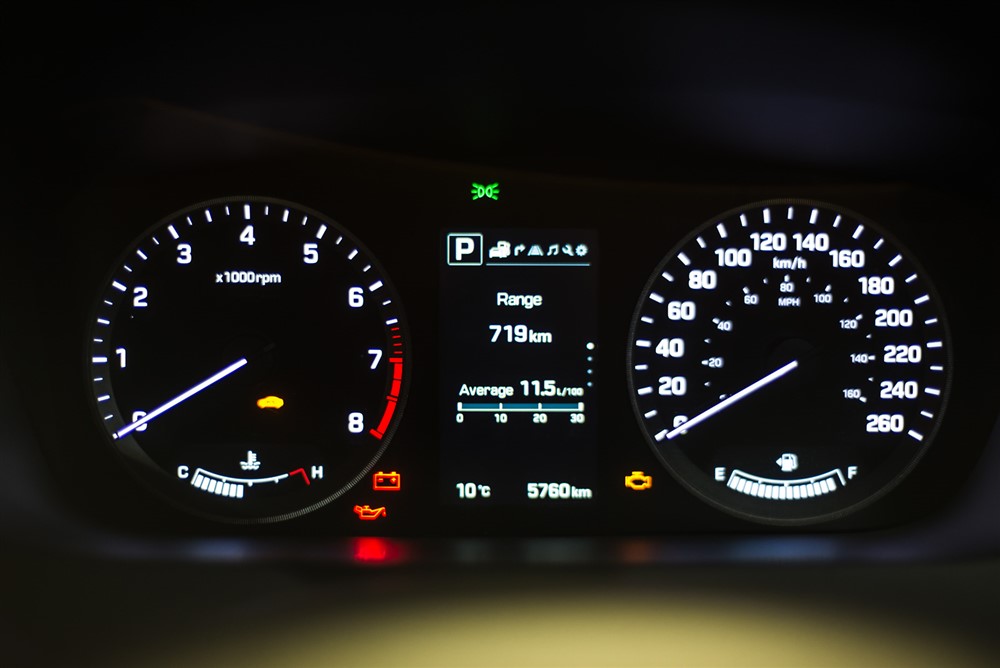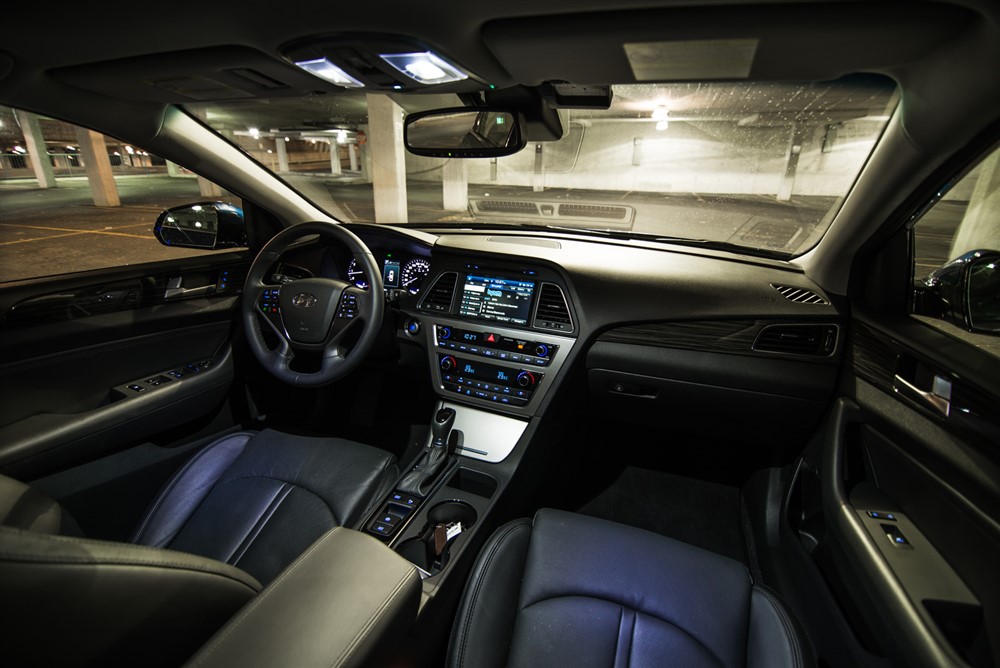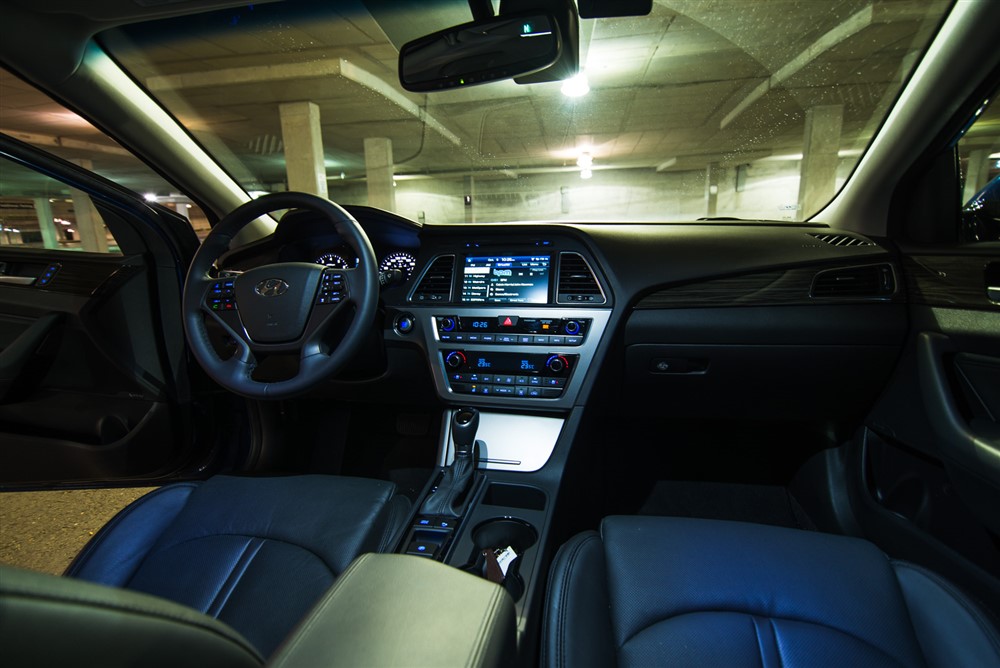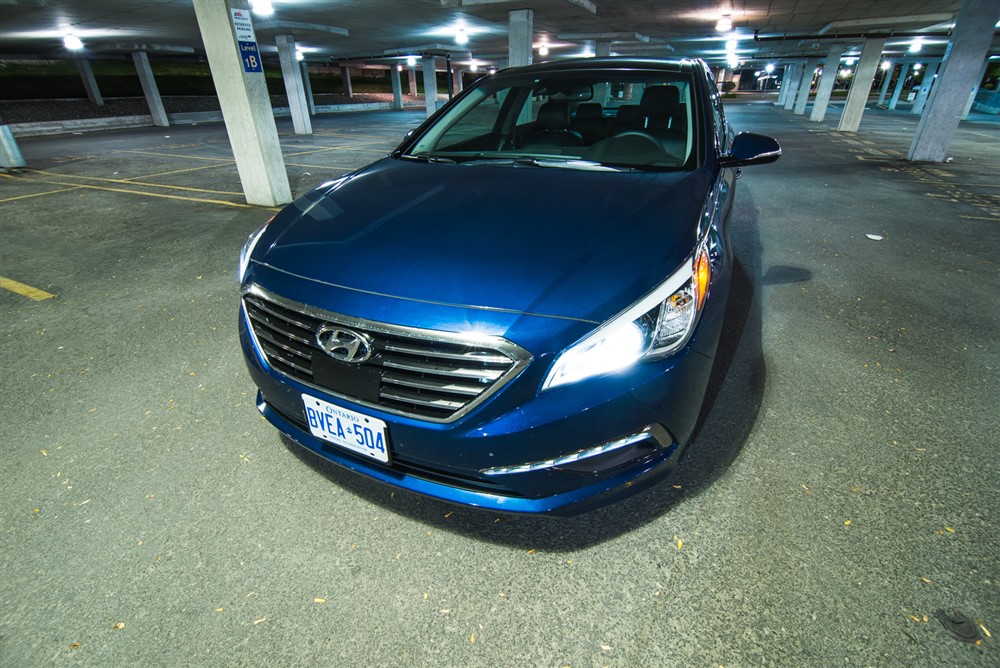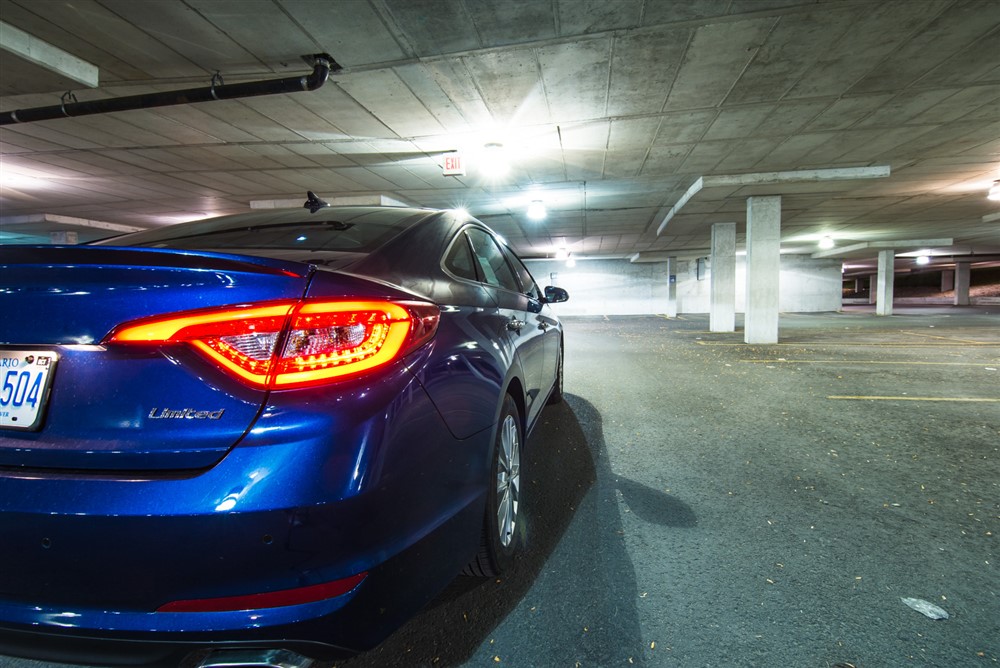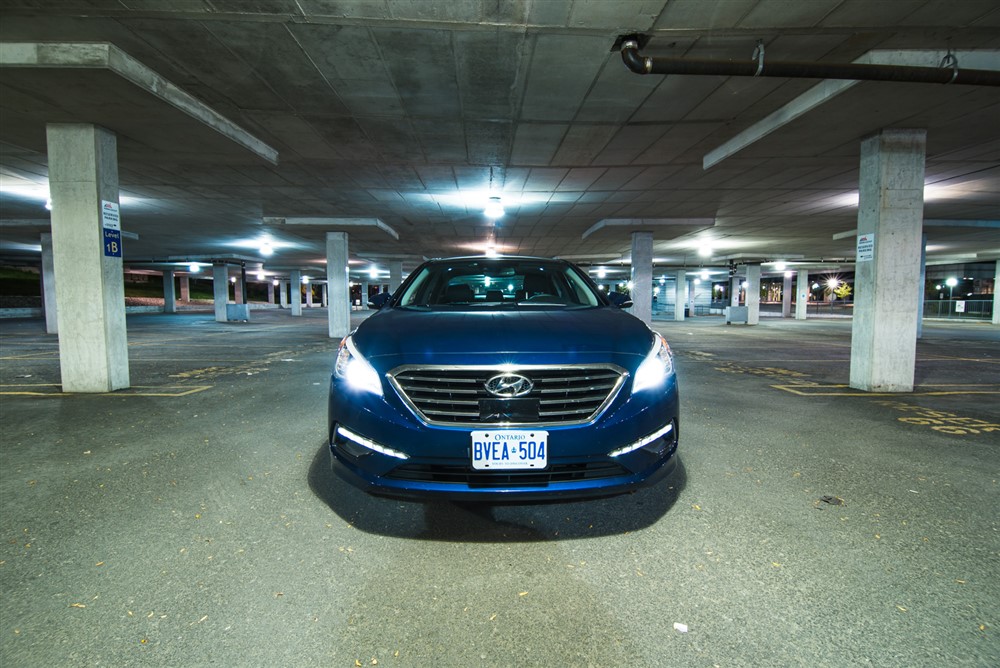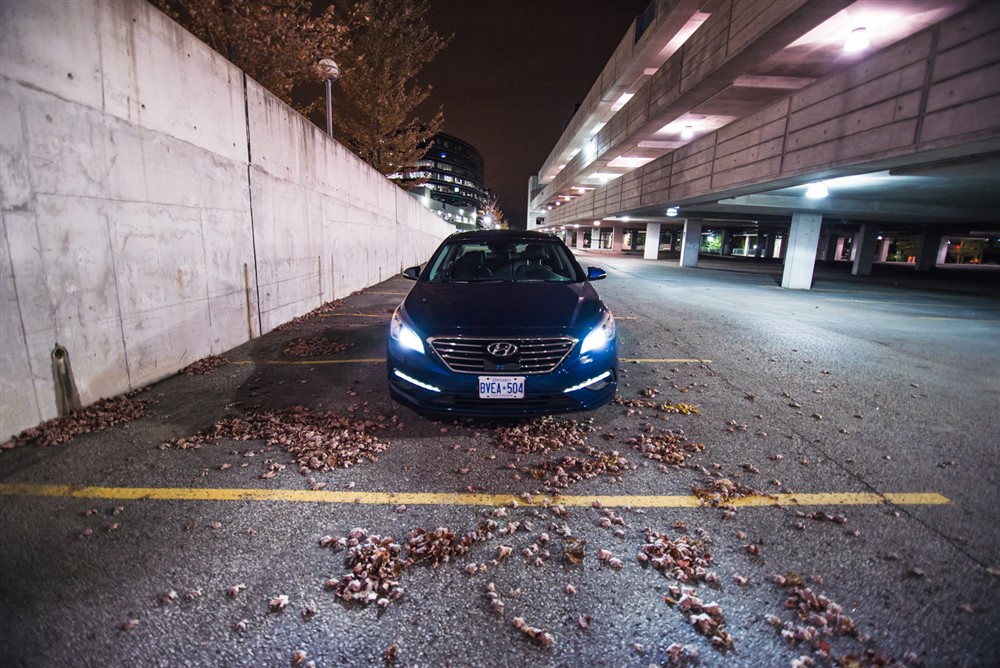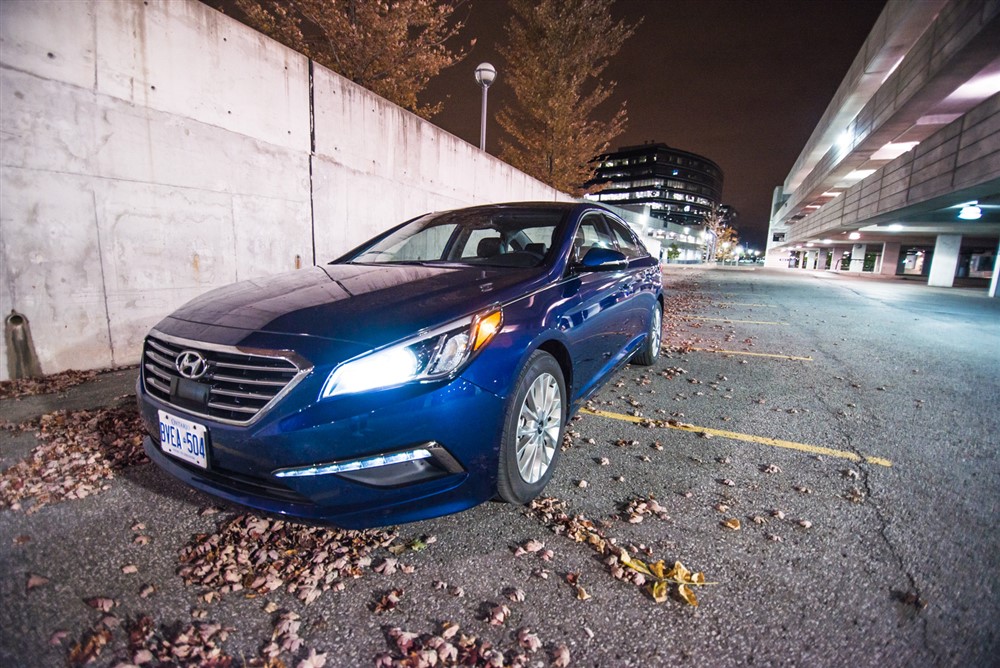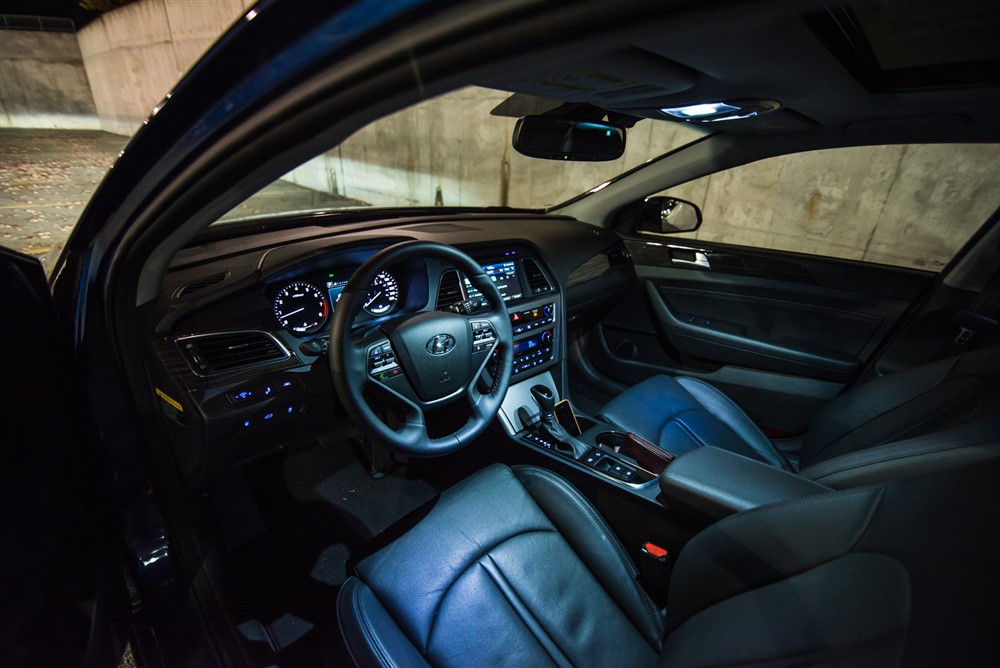The Hyundai Sonata has always been a family car for the masses. Hyundai’s best selling point has always been with value, something they excel at. While the other competitors may offer a car that sells on a promise of quality or performance, Hyundai has consistently sold their cars offering the best bang for buck. The sixth-generation Sonata marked the beginning of a new era for Hyundai, they have finally produced a car that could compete against their Japanese rivals. For the first time, the word “luxury” and the Hyundai name together in a sentence were acceptable. Now in its seventh generation, has the company stuck to its roots in offering an affordable car for the masses with the 2015 Hyundai Sonata, or are they continuing to strive for more?
My tester was the Sonata Limited in Coast Blue, a colour that I think works very well on the car. Partly because it’s actually a deep rich blue, and partly because this car looks really nice overall anyhow. Hyundai has adapted some of the design cues from the Genesis Sedan for the new Sonata, which is a good thing because the Genesis looks fantastic. Thus, in lieu of the swoopy lines and curves, the new Sonata features a much more angular front end and an overall more aggressive design. While the sixth-generation car was polarizing at first, I don’t really think it’s a design that aged particularly well. This new car should change that.
Underneath the redesigned headlights is a pair of LED daytime running lights, a neat little addition on all trim levels that shows Hyundai is keeping up with the times and are paying attention to the details. Another example is the trapezoidal tailpipes at the back – these are all details that add up to make the car feel a lot more upscale than its predecessor. One element that still bugs me is the radar sensor on the front, it gives the car a gap in the grill making it look like the front license plate (mandatory here in Ontario) is misplaced. Overall though, compared to its competitors, I’d say the Hyundai is a better-looking one of the lot.
Inside, the attention to detail continues (as does Hyundai’s interesting obsession with trapezoids). Materials on the dash are soft to the touch and most cost saving measures are tucked away. The only obvious one I could find was the large panel that hides the USB and AUX ports in the center console. The plastic felt really cheap around it, but other than that, the car continues to challenge what one should expect in a $34,000 mid-size family sedan. For a little less than $34,000, the Sonata Limited comes equipped with pretty much all the bells and whistles found in its European brethren, and is powered by a 2.4L inline-4. The engine features 185 horsepower @ 6000rpm with 178 lb-ft of twist at 4000rpm. Delivery comes from a 6-speed automatic transmission with Hyundai’s SHIFTRONIC sport mode (no CVT here!). For those who find the powers figures lacking in the 2.4L engine could always pony up the extra ~$1800 for the turbocharged high-horsepower 2.0T.
During my time with the Sonata, I was fortunate enough to take it on a small road trip to the Kitchener-Waterloo area. During the long-ish drive was when the Sonata really came alive. Adaptive cruise control and an extremely quiet cabin made navigating through traffic a breeze. The large panoramic sunroof was a real treat too. The Sonata kept me entertained with the 8-inch infotainment screen and 9-speaker infinity sound system while comfortable in the heated and ventilated leather seats.
Perhaps the only downside to the Sonata is its power plant. Yes, the 185 horsepower 2.4L did struggle a bit when trying to pass other people on the left lane, but only a tiny bit. Most times the engine performed admirably, and once in the city, the 4 cylinder did a great job of getting up to speed and was quite adequate. Gas mileage was as advertised as I managed in the 6.0L/100KM range on the highway, and 8.3L/100KM overall in combined city and highway driving over my test week. However, if it were up to me, I’d still pony up the extra cash for the larger engine, if only for no other reason than to say that it’s a turbocharged Hyundai.
All in all, Hyundai has done a great job of giving the Sonata a decidedly more premium feel. Like the new Genesis pushing the boundaries of budget luxury, the Sonata pushes the boundaries of what a mid-size sedan should be. If you’re willing to sacrifice the larger engine, you can get a really loaded car for just over $30,000. And no matter how you look at it, that’s a tremendous amount of value that’s difficult to argue with.




